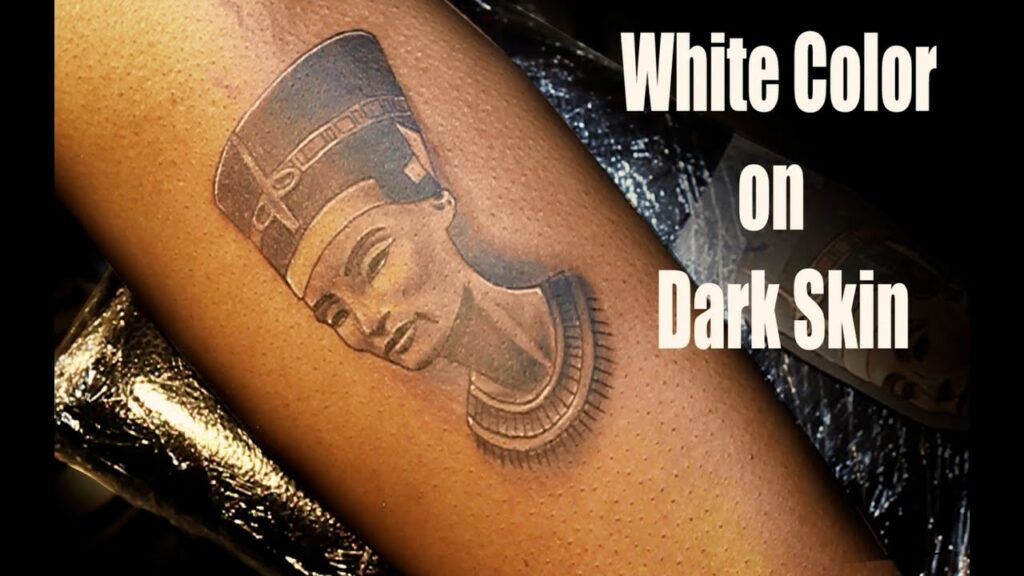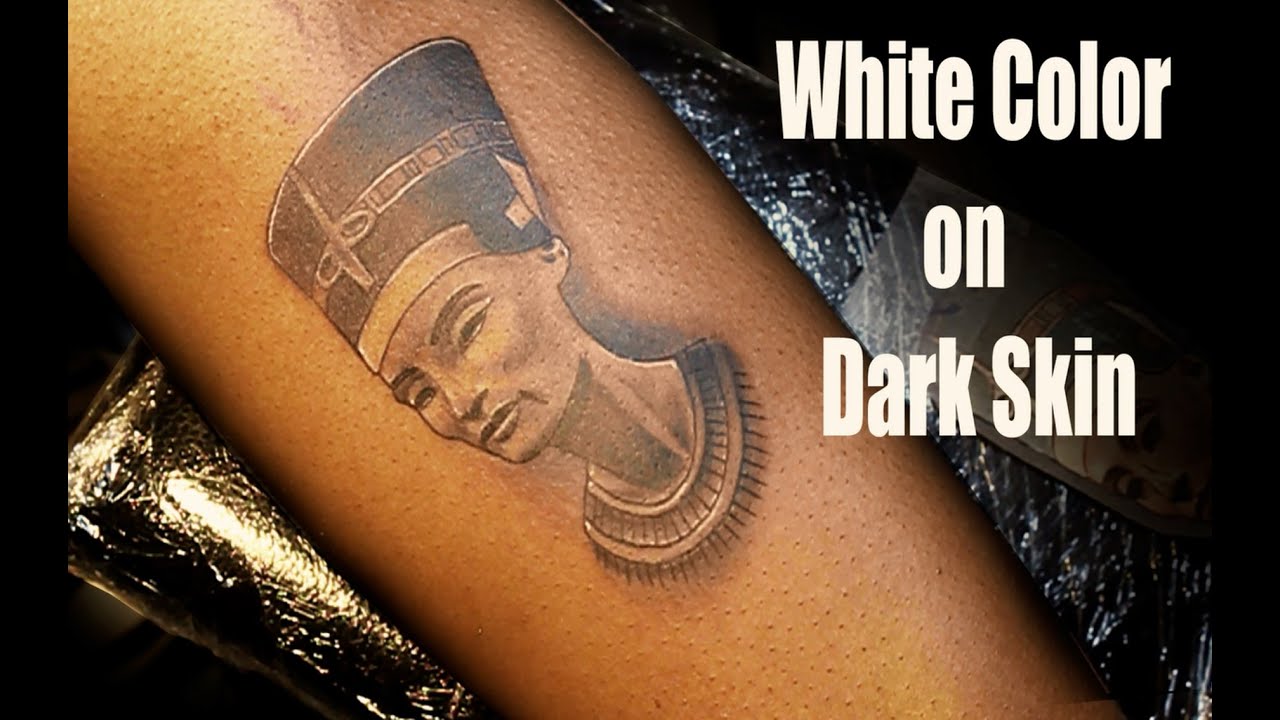
Tattoos for Dark Skin: Navigating Color, Design, and Aftercare
The art of tattooing transcends skin tones, but achieving vibrant and lasting tattoos for dark skin requires a nuanced understanding of color theory, design choices, and aftercare practices. For individuals with melanin-rich skin, selecting the right artist and design is crucial to ensure the tattoo heals beautifully and retains its vibrancy over time. This article delves into the specifics of tattoos for dark skin, offering expert advice on how to navigate the process from initial consultation to long-term maintenance.
Understanding Melanin and Tattoo Ink
Melanin, the pigment responsible for skin color, plays a significant role in how tattoo ink appears. Darker skin tones contain higher concentrations of melanin, which can affect the visibility and vibrancy of certain ink colors. Therefore, understanding how melanin interacts with tattoo ink is the first step in making informed decisions about your tattoo.
The Impact of Melanin on Color
Melanin can act as a filter, potentially muting some colors while allowing others to stand out. Lighter colors, such as pastels and certain shades of white or light grey, may not be as visible on darker skin. Instead, bolder, highly pigmented colors tend to yield the best results. When considering tattoos for dark skin, discuss color options with your tattoo artist to determine which shades will complement your complexion.
Choosing the Right Colors for Dark Skin
Selecting the appropriate colors is paramount to ensuring your tattoo is visible and aesthetically pleasing. While personal preferences are important, certain colors consistently perform better on darker skin tones.
- Black: A classic choice, black ink provides excellent contrast against dark skin. It’s ideal for bold designs, intricate linework, and creating a strong visual impact.
- Deep Blues and Purples: Rich, saturated blues and purples can create stunning tattoos for dark skin. These colors offer a sophisticated look and provide good visibility.
- Emerald and Forest Greens: These shades of green can also work well, especially when used in designs that incorporate natural elements.
- Reds and Oranges (with caution): While vibrant, reds and oranges can sometimes blend into darker skin tones or appear less defined. Choosing deeper, more saturated shades and working with an experienced artist can help mitigate these issues. It is imperative to research the specific ink brands used and ensure they are high quality and designed for visibility on all skin tones.
Selecting a Tattoo Design
Beyond color, the design itself plays a crucial role in the overall appearance of tattoos for dark skin. Bold lines, ample spacing, and thoughtful placement are essential for creating a tattoo that stands the test of time.
Bold Lines and Spacing
Intricate designs with fine lines may become less defined over time, particularly on darker skin. Opting for bolder lines and ensuring adequate spacing between design elements will help maintain clarity and prevent the tattoo from appearing muddy. Consider designs that incorporate negative space to allow the skin’s natural tone to enhance the artwork.
Placement Considerations
The placement of your tattoo can also influence its visibility. Areas with less sun exposure, such as the inner arm or back, may help preserve the vibrancy of the ink. Discuss placement options with your artist to determine the best location for your chosen design. Certain areas may also be more prone to fading or blurring, so it’s important to consider these factors during the planning stage. [See also: Tattoo Placement Guide]
Finding the Right Tattoo Artist
Perhaps the most critical aspect of getting tattoos for dark skin is selecting a tattoo artist with experience working on melanin-rich skin. An artist who understands the nuances of tattooing darker skin tones will be able to provide expert guidance on color selection, design suitability, and aftercare practices.
Portfolio Review
Before committing to an artist, carefully review their portfolio. Look for examples of their work on clients with similar skin tones to yours. Pay attention to the vibrancy of the colors, the clarity of the lines, and the overall aesthetic of the tattoos. A reputable artist will be happy to showcase their experience with tattoos for dark skin.
Consultation is Key
Schedule a consultation with potential artists to discuss your ideas and concerns. A good artist will listen to your vision, offer professional advice, and be transparent about what is achievable. Use this opportunity to ask about their experience with tattoos for dark skin, the types of inks they use, and their aftercare recommendations. [See also: Questions to Ask Your Tattoo Artist]
The Tattooing Process
The actual tattooing process for dark skin is generally the same as for lighter skin tones. However, an experienced artist will adjust their technique as needed to ensure optimal ink saturation and prevent excessive trauma to the skin.
Proper Technique
The artist should use a steady hand and appropriate needle depth to deposit the ink evenly. Overworking the skin can lead to inflammation and scarring, which can negatively impact the appearance of the tattoo. A skilled artist will know how to avoid these pitfalls and create a smooth, consistent result.
Aftercare for Tattoos on Dark Skin
Proper aftercare is crucial for ensuring your tattoo heals properly and retains its vibrancy. Following your artist’s instructions diligently will help prevent infection, minimize scarring, and promote optimal healing.
Cleaning and Moisturizing
Keep the tattoo clean by gently washing it with mild, fragrance-free soap and water. Pat it dry with a clean towel and apply a thin layer of fragrance-free moisturizer recommended by your artist. Avoid using harsh chemicals, scented lotions, or petroleum-based products, as these can irritate the skin and interfere with the healing process.
Sun Protection
Sun exposure can cause tattoos to fade over time, especially on darker skin. Protect your tattoo by applying a broad-spectrum sunscreen with an SPF of 30 or higher whenever it’s exposed to the sun. Consider using clothing to shield the tattooed area from direct sunlight. Consistent sun protection is vital for maintaining the vibrancy of your tattoos for dark skin. [See also: Tattoo Sun Protection Tips]
Avoiding Irritation
Avoid wearing tight clothing that can rub against the tattoo and cause irritation. Also, refrain from scratching or picking at the tattoo, as this can lead to infection and scarring. If you experience any signs of infection, such as redness, swelling, or pus, consult a medical professional immediately.
Long-Term Maintenance of Tattoos for Dark Skin
Maintaining the vibrancy of your tattoos for dark skin requires ongoing care and attention. Regular moisturizing, sun protection, and avoiding harsh chemicals will help keep your tattoo looking its best for years to come.
Regular Moisturizing
Keep your skin hydrated by moisturizing regularly, especially after showering or swimming. This will help prevent the tattoo from drying out and fading.
Annual Check-Ups
Consider visiting your tattoo artist for an annual check-up. They can assess the condition of your tattoo and recommend any necessary touch-ups or maintenance procedures. Touch-ups can help revitalize faded colors and sharpen lines, ensuring your tattoo continues to look its best.
Common Misconceptions About Tattoos on Dark Skin
There are several misconceptions surrounding tattoos for dark skin. Addressing these myths can help individuals make informed decisions and feel confident in their choice to get tattooed.
Myth: Tattoos Don’t Show Up on Dark Skin
This is perhaps the most common misconception. While it’s true that certain colors may not be as visible on darker skin, bold, well-executed tattoos can look stunning on any skin tone. The key is to choose the right colors, design, and artist.
Myth: Dark Skin Scars More Easily
While dark skin is more prone to hyperpigmentation (darkening of the skin) and keloid scarring, this doesn’t mean that tattoos will automatically cause scarring. Proper technique and aftercare can minimize the risk of scarring on any skin tone.
Myth: Only Black Ink Works on Dark Skin
While black ink is a reliable choice, it’s not the only option. Deep blues, purples, and greens can also look beautiful on dark skin. The key is to choose highly pigmented inks and work with an experienced artist who understands color theory and how it applies to darker skin tones.
Conclusion
Getting tattoos for dark skin is a rewarding experience when approached with knowledge and care. By understanding the nuances of color theory, design choices, and aftercare practices, individuals with melanin-rich skin can achieve stunning, long-lasting tattoos. Choosing the right artist, prioritizing proper aftercare, and dispelling common misconceptions are essential steps in ensuring a successful and satisfying tattoo journey. Remember to always consult with a professional tattoo artist who specializes in tattooing darker skin tones to discuss your specific needs and preferences. With the right approach, tattoos for dark skin can be a beautiful and empowering form of self-expression.

